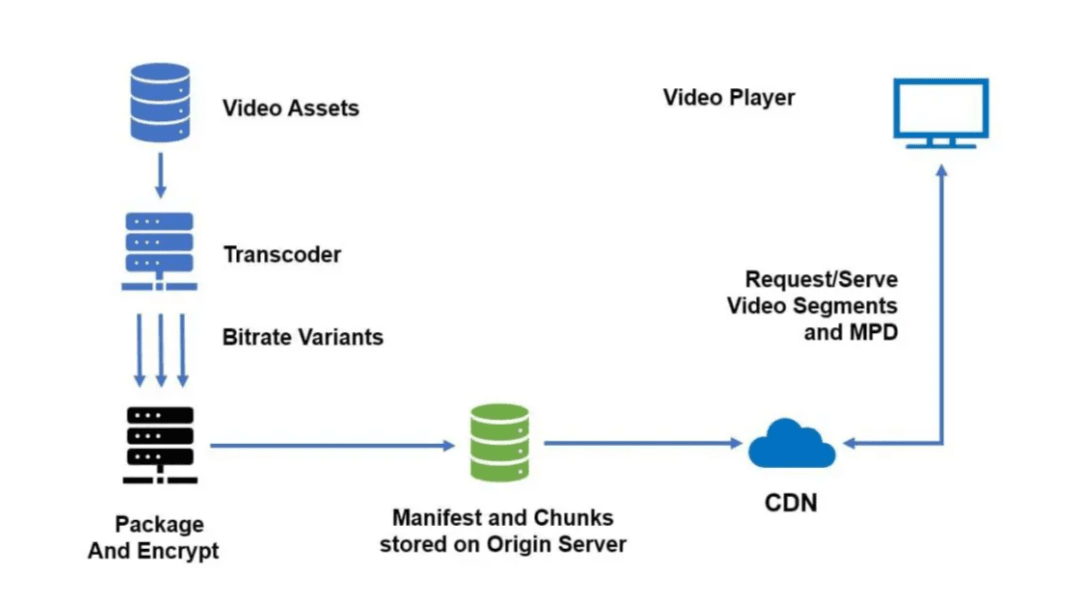
In an era where streaming has become an integral part of our digital lives, the fusion of live streaming and artificial intelligence (AI) has opened up a world of possibilities. AI technology has not only transformed the way we consume content but has also enhanced the overall live streaming experience for both creators and viewers. In this blog article, we'll explore how AI works and the ways AI is used in live streaming.
Working Principles of Live Streaming

- Bandwidth and Connection:
At the heart of Live Streaming lies the importance of a stable and robust internet connection. Bandwidth refers to the amount of data that can be transmitted over a network connection at any given time. Smooth Live Streaming requires a sufficient amount of bandwidth to transmit high-quality video and audio in real-time. Content creators rely on advanced encoding techniques to optimize the stream for various devices, ensuring a seamless viewing experience for their audiences.
- Encoding and Compression:
To transmit video and audio data efficiently, Live Streaming employs encoding techniques. Raw video and audio files are compressed using codecs, algorithms that remove redundant information while maintaining the quality and reducing the file size. Common codecs include H.264 and H.265, which are widely compatible and ensure excellent quality even at low bitrates. This compression allows users to stream content more easily and reach a larger audience without overwhelming their network connection.
- Content Delivery Networks (CDNs):
One crucial aspect of Live Streaming is the use of Content Delivery Networks or CDNs. CDNs are distributed systems of servers strategically placed around the world, minimizing the distance between the content source and the viewer. When a Live Stream is initiated, the video and audio data are fragmented and sent to various CDN servers. This allows for reduced latency, faster loading times, and improved tolerance for peak viewer traffic. By leveraging CDNs, content creators can reach global audiences and maintain a stable stream across different geographical locations.
- Scalability and Adaptive Bitrates:
Live Streaming must be scalable to meet the demands of ever-growing audiences. To achieve this, Adaptive Bitrate Streaming (ABR) is utilized. ABR dynamically adjusts the quality of the stream in real-time based on the viewer's network conditions. By offering multiple quality levels, viewers with slower connections can still access the stream without buffering issues. ABR ensures an uninterrupted viewing experience for everyone, regardless of their internet speed, device, or location.
AI Enhancements in Live Streaming
1. Enhanced Video Quality:
Poor video quality can be a major deterrent for viewers, often leading to disappointment and abandonment of a live stream. However, AI has stepped in to tackle this issue. Through the implementation of AI algorithms, live streaming platforms are now capable of dynamically analyzing network conditions, optimizing video encoding, and adjusting streaming quality in real-time. This ensures smoother playback, reduced buffering, and an overall improvement in video quality, ensuring a seamless viewing experience.
2. Automated Content Moderation:
With the increasing volume of live content being broadcasted, the need for content moderation has become critical. AI-powered algorithms can now automatically detect and filter inappropriate or harmful content, including hate speech, nudity, or violence, saving content creators considerable time and effort. By utilizing machine learning, AI continuously learns and adapts to new patterns, enabling more accurate moderation and ensuring a safe environment for viewers.
3. Personalization and Audience Engagement:
AI plays a crucial role in tailoring live streaming experiences to individuals, thus enhancing viewer engagement. By analyzing user preferences, search history, and past interactions, AI algorithms provide recommendations for relevant live streams based on specific interests. Additionally, chatbots powered by AI assist in interactive sessions, engaging with viewers in real-time, answering queries, and even moderating discussions. These personalized experiences create a deeper connection between creators and their audience, fostering loyalty and driving viewership.
4. Real-time Language Translation:
Live streaming is no longer confined to language barriers, thanks to the power of AI. With the application of natural language processing and machine learning, AI algorithms can now provide real-time translation during live streams. This breakthrough enables global audiences to engage with content regardless of the language spoken, expanding the scope and reach of live streaming platforms and breaking cultural boundaries.
5. Automated Production and Enhanced Broadcasting:
Traditionally, live streaming required significant production efforts and skilled operators to capture and broadcast events. However, AI has simplified the entire process with automated production techniques. Through machine learning algorithms, AI can automatically switch camera angles, track objects or people, and even adjust lighting and sound levels in real-time. This breakthrough democratizes live streaming, enabling anyone to effortlessly produce high-quality content without the need for expensive equipment or technical expertise.
6. Enhanced Personalized Recommendations:
When you browse through a live streaming platform, wouldn't it be great if the content effortlessly matched your interests? AI algorithms can utilize machine learning techniques to analyze your viewing habits, preferences, and browsing history, thereby offering personalized recommendations. By leveraging AI, live streaming platforms can keep users engaged by suggesting content tailored to their unique tastes.
Conclusion:
The integration of AI into live streaming has transformed the industry, offering creators and viewers a wide range of benefits and possibilities. From enhancing video quality to automating content moderation, personalization, and even real-time translation, AI has revolutionized the live streaming experience. As technology continues to evolve, we can expect even more innovative applications of AI that will shape the future of live streaming, bringing us closer together in the digital realm.
Tencent RTC offers robust tools for creating smooth and engaging video experiences. From fast live streaming to flexible bitrate options and in-depth analytics, developers can use Tencent RTC Live SDK to build top-notch video communication and streaming apps.
If you have any questions or need assistance, our support team is always ready to help. Please feel free to Contact Us or join us in Discord.


